Connecting with the Cosmos.
On April 1 and 2, NASA hosted an event to celebrate 50 years of its Deep Space Network (DSN). I was lucky to be part of a pool of 50 drawn from all over the USA to participate in this event. On Day 1 we were given a tour of the Jet Propulsion Laboratory (JPL) in Pasadena, California, followed by an interaction with the laboratory’s engineers and scientists. On Day 2 we forayed deep into the Mojave Desert to the Goldstone Deep Space Communications Complex, the site of a cluster of large antennas located within the perimeter of US Military’s Fort Irwin training facility. The DSN constitutes our ‘eyes’ and ‘ears’ enabling us to see and hear the farthest reaches of Creation.
Our hosts at JPL were warm and gracious. Both at JPL and Goldstone, we saw the professionalism, pride and dedication the staff brings to their job. These are people who truly love what they do.
The local ABC affiliate in Los Angeles filed this report of the event.
In this post I shall record a few of the highlights. Due to space constraints on our shuttle bus, I went in with just one 5D Mark III body mated to the 24-105L lens; I had to leave my tripod at home as well. The antennas dotting the vast desert terrain at Goldstone make for a surreal scene at twilight. Unfortunately, access to the facility during these (photographically productive) hours is restricted.
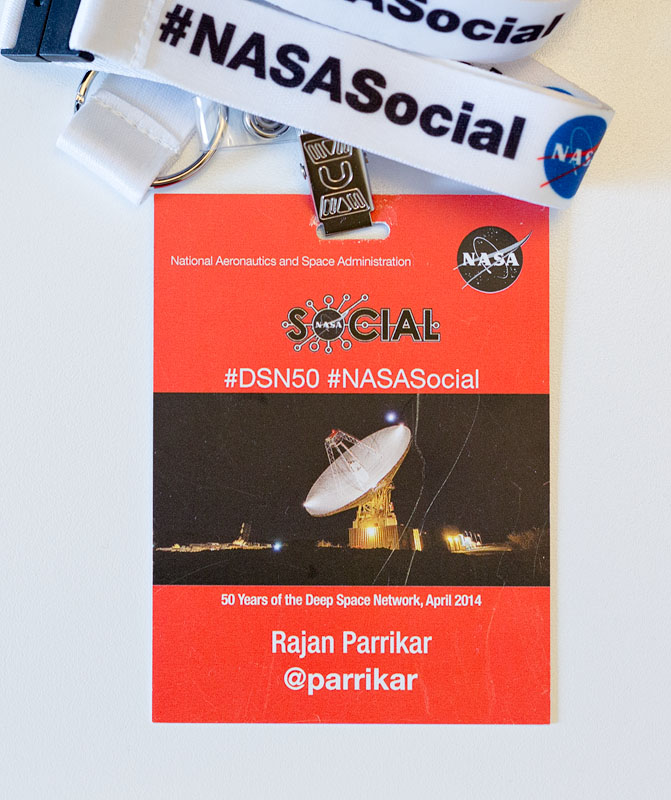
My NASA badge
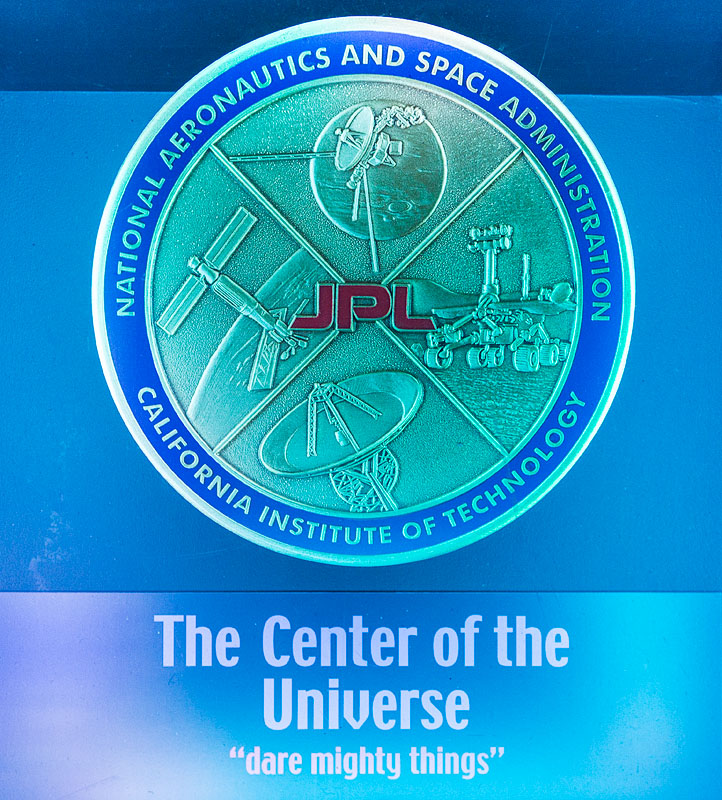
Jet Propulsion Laboratory (JPL) in Pasadena, California, the Centre of the Universe
Signals from all of NASA‘s deep space probes are acquired by the large reflector antennas at Goldstone and transmitted to Mission Control at JPL via dedicated underground fibre optic lines. This is the safest building you can find yourself in in the event of a severe earthquake since it is designed to a high factor of safety.
To this day, Mission Control communicates with Voyager 1 (launched in 1977), the farthest man-made object from Earth yet and now in interstellar space. As of April 2014, it takes almost 18 hours for the faint signal from Voyager 1 to arrive.
Check out the real time status of signal acquisition here.
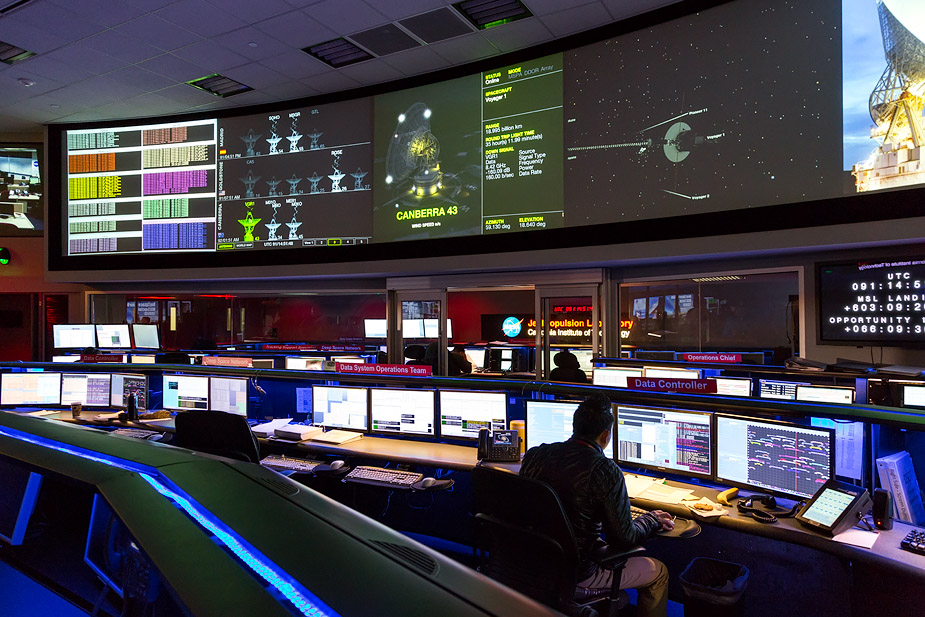
Mission Control at JPL
Curiosity‘s Earth-based twin Maggie serves as a testbed to troubleshoot issues that may arise with the Mars explorer.
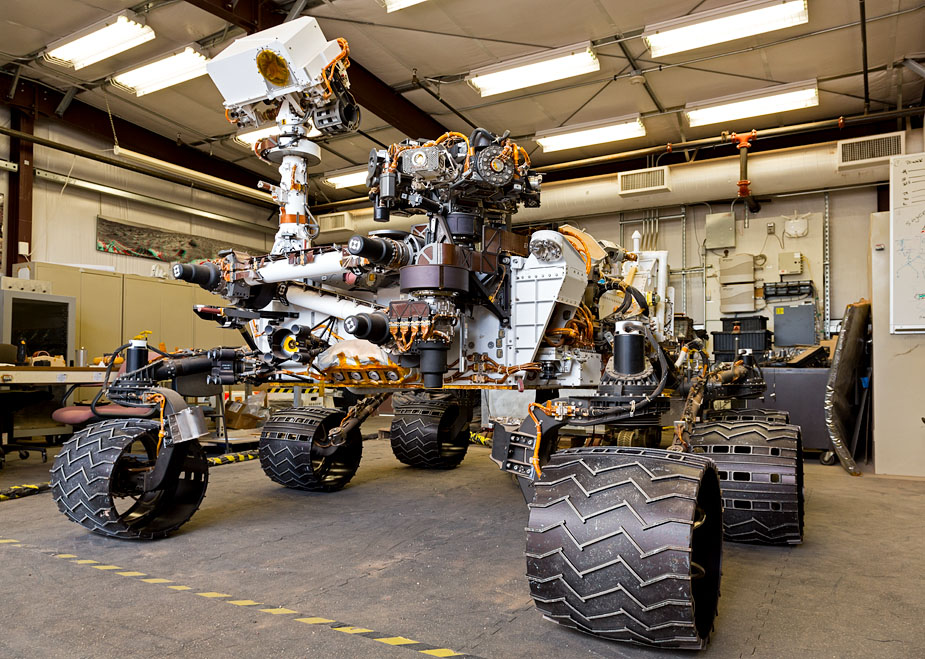
Earth-based Mars rover Maggie, Curiosity’s twin
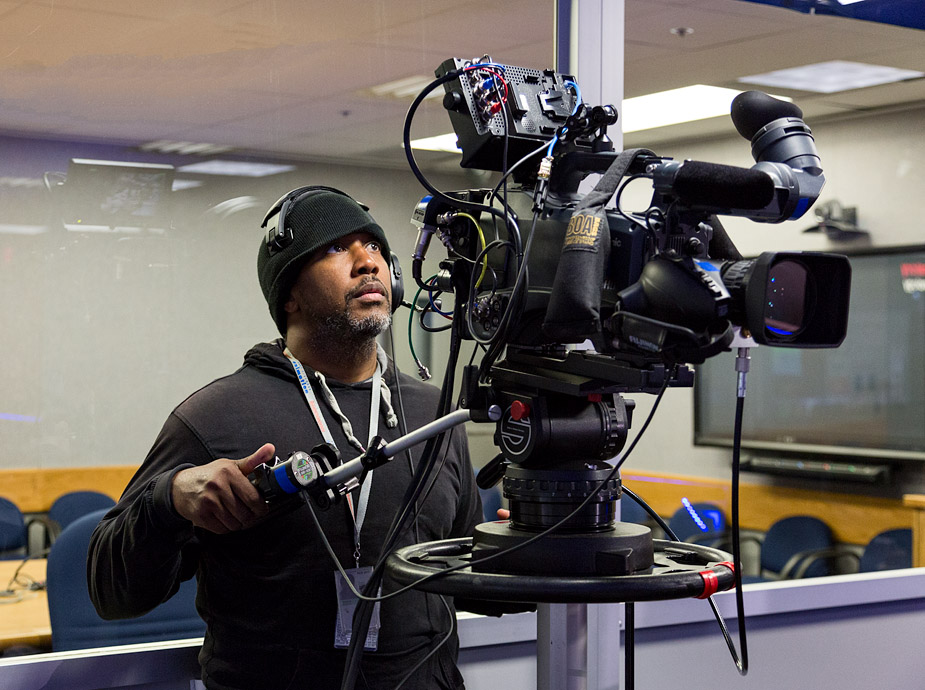
Nigel Thomas of JPL TV Ops
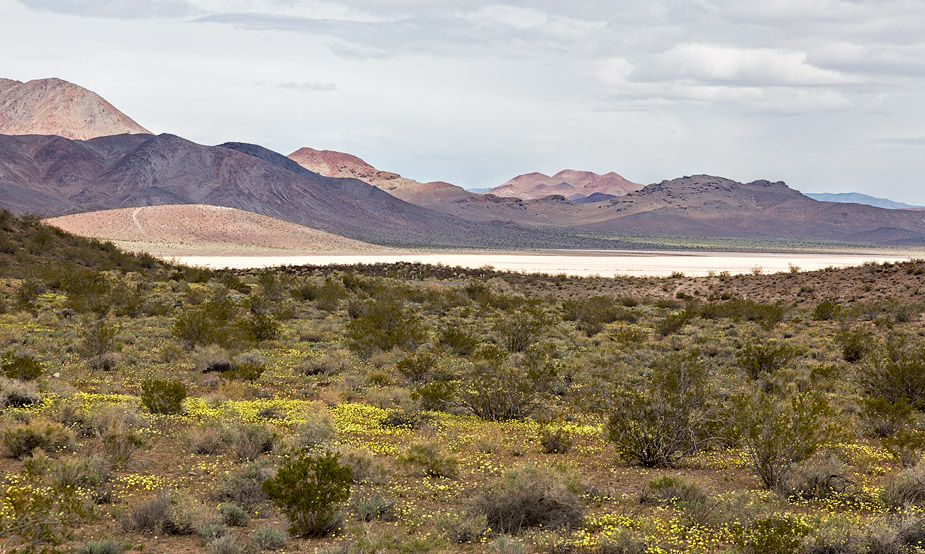
Wildflowers at the Goldstone Dry Lake, Mojave Desert, California
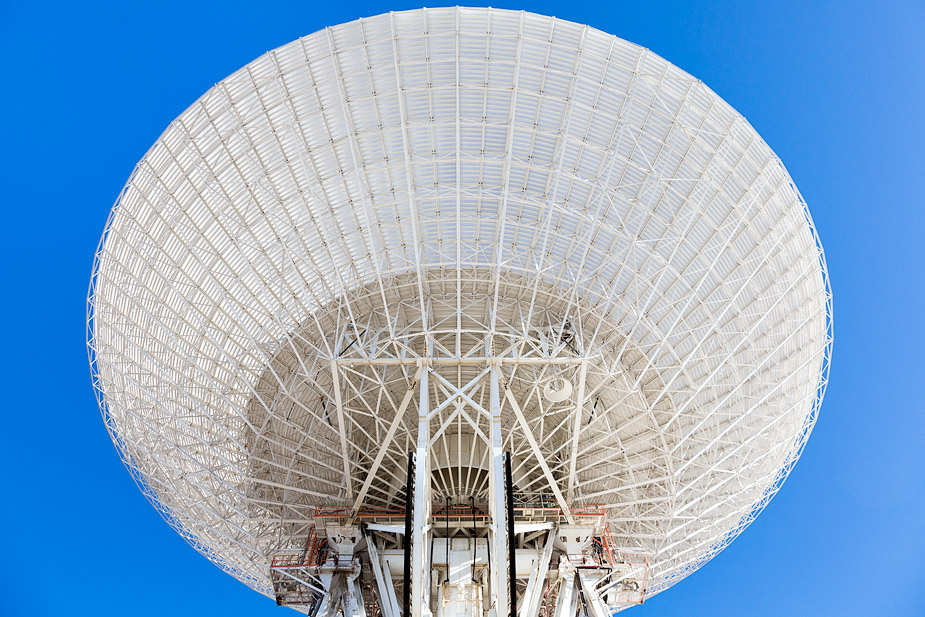
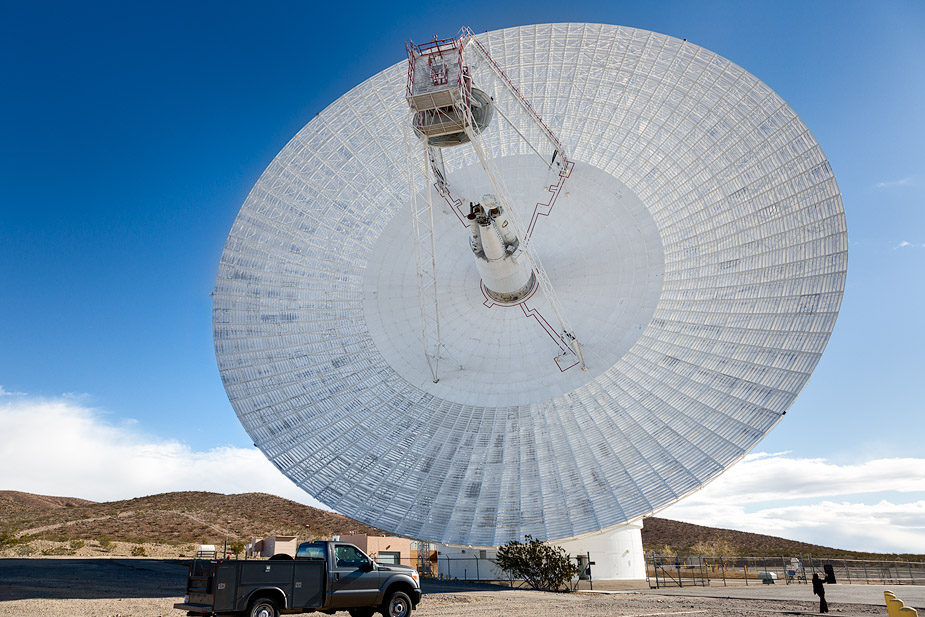
70-metre Mars antenna at Goldstone
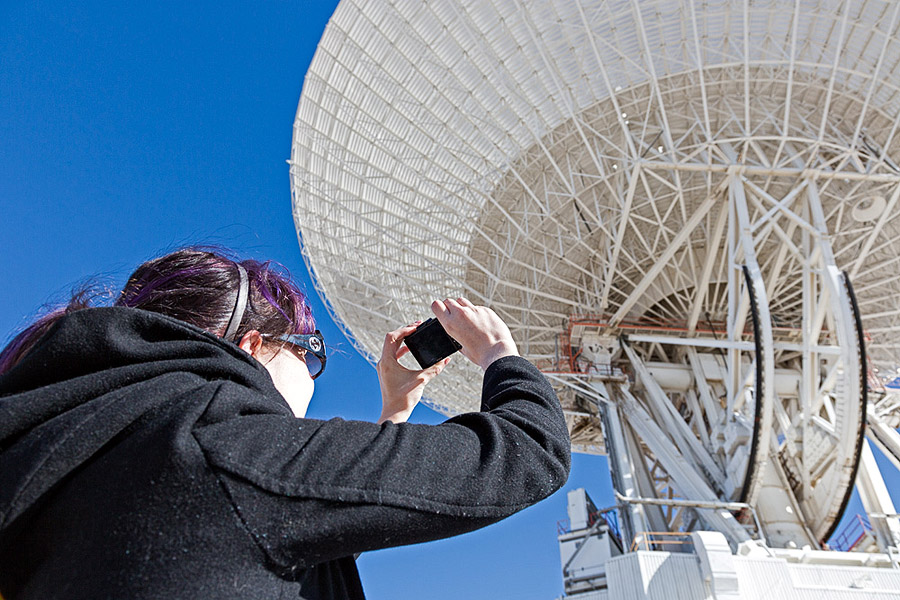
Co-participant Ariel Waldman at the 70 metre Mars antenna
This antenna together with the Parkes antenna near Sydney, Australia, brought us the first pictures and sounds of Neil Armstrong’s steps on the moon.
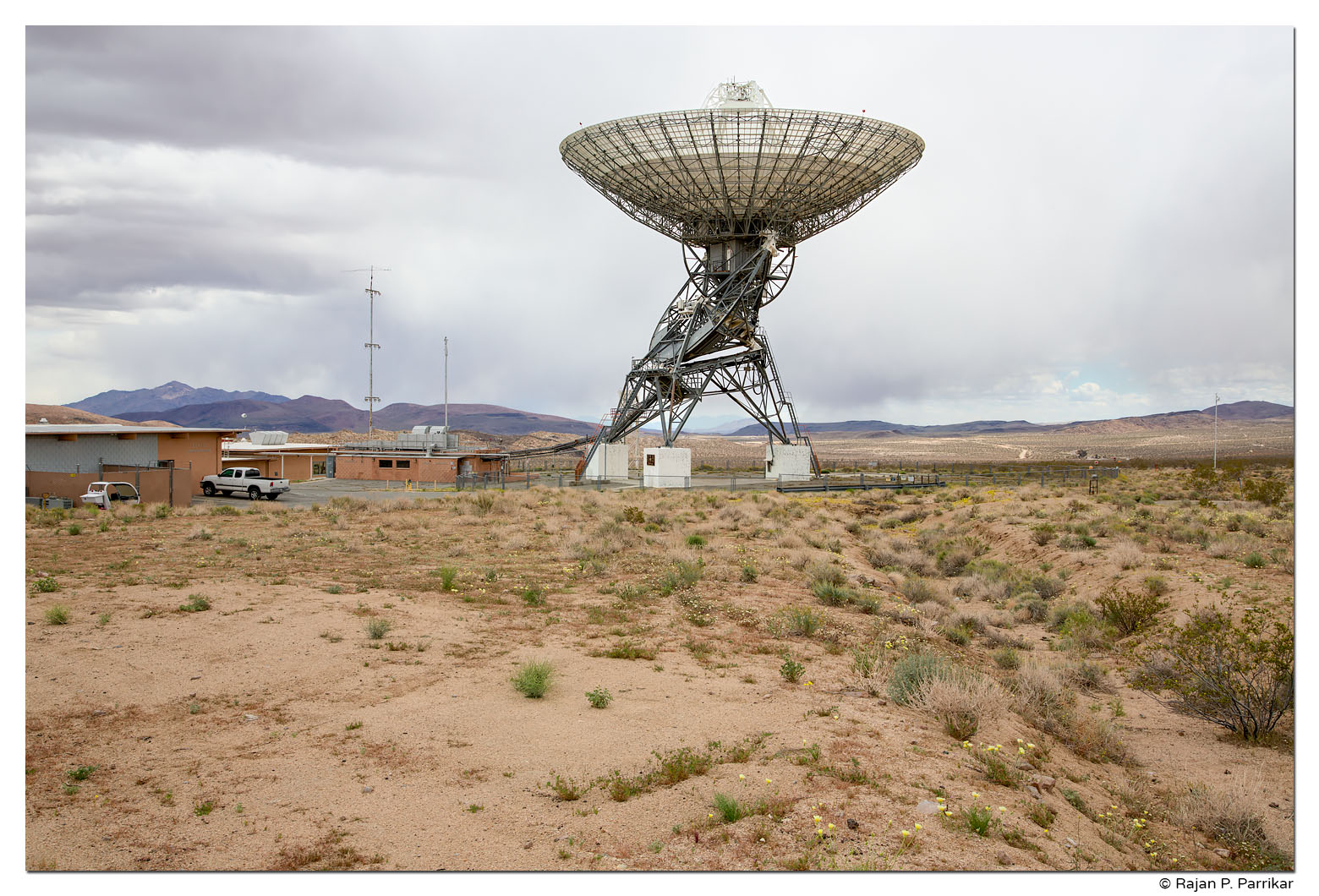
34-metre reflector antenna of the Apollo manned missions





Rajan bhai, I remember sending you an email about this. Thanks for visiting and sharing your experience. I can now enjoy visiting this facility vicariously through your lens and pen (should I say keyboard :-)). Photos khoopuch sundar aasat, especially the 70-metre Mars antenna. Do share more photos and experience.
Thanks, Premanand.
I remember watching those noisy, b&w videos of the Neil Armstrong on the moon so many years ago…
Thanks for sharing, Rajan!
Good to hear from you, Larry.
Wow! You made best use of the rare opportunity. Great photos like always.
Thanks,
Ranjan
Thank you, Priyaranjan. Glad you enjoyed the photos.